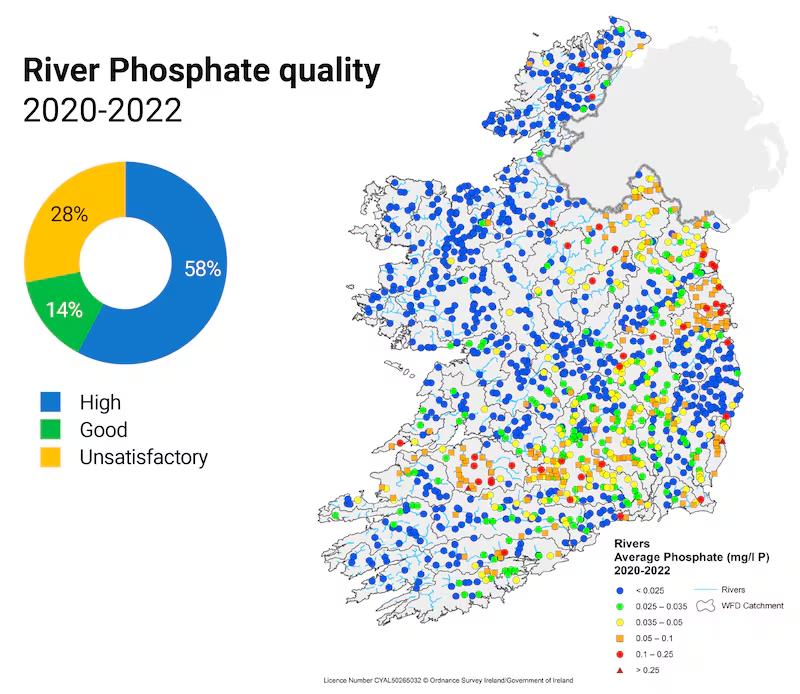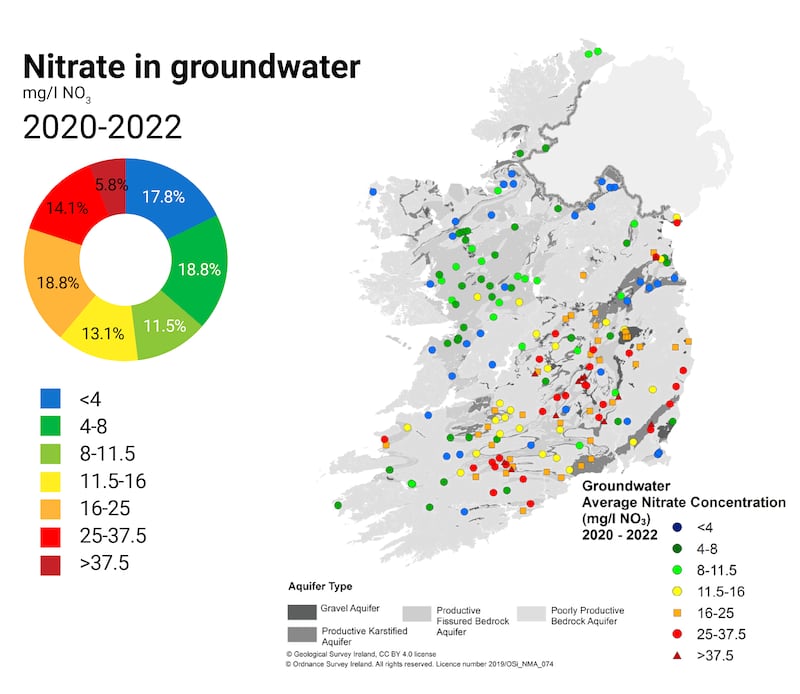Levels of polluting nitrogen and phosphorus in Irish watercourses arising from human activities such as farming and forestry are at unacceptably high levels, according to the EPA.
Overall, there was “no significant improvement in the biological quality of our rivers or lakes” last year, the state agency found. Improvements are happening in some areas but they are offset by declines elsewhere, it found in its latest evaluation of rivers, lakes, estuaries, coastal waters and groundwaters.
When excess nutrients – nitrogen and phosphorus – enter watercourses, they cause an overgrowth of plants and algae, which clogs up watercourses, uses up oxygen and harms fish and other aquatic life and may pose a threat to human health. These nutrients are among “the most significant stressors on water quality and ecosystem health”, the EPA warns.
[ Sewage discharge into Nenagh river shut off by Uisce Éireann after EPA inspectionOpens in new window ]
Nitrogen and phosphorous loadings to the marine environment have been increasing since 2013. Quantities of both nutrients were higher in 2022 than in 2021, “placing continued pressure on our marine water bodies”, it finds.
How a hotter world is affecting Ireland in five graphics
How krill fishing threatens whale recovery in Antarctica
Irish company leveraging AI to help brands communicate climate actions responsibly and avoid claims of greenwashing
Strong political leadership required immediately to bring carbon budgets into line, Climate Council warns

Nitrogen levels – mainly from agricultural fertilisers and manures – increased in rivers and groundwater last year. Concentrations are “too high in 40 per cent of river sites nationally and in 20 per cent of estuarine and coastal water bodies”.
Phosphorus levels, mainly from agricultural runoff and wastewater discharges – notably sewage – are generally stable but are still too high in many rivers and lakes. Concentrations were too high in 28 per cent of rivers and 36 per cent of lakes.
“Action needs to be taken by the agriculture sector and Uisce Éireann to reduce the losses of both nutrients to the environment,” it adds.
There is an EU and national goal of restoring all waters including rivers and lakes to good or better status by 2027. Changes in nutrient levels and biological quality are key indicators of progress in achieving water quality objectives.

The ecology of estuaries and coastal waters are particularly sensitive to nitrogen. The worst impacted estuaries for nitrogen exceedances are Glashaboy estuary in Cork; Wexford Harbour; Castletown estuary in Co Louth; Upper Barrow estuary in Kilkenny; and Corock estuary in Co Wexford.
Nitrogen levels have significantly increased in four water bodies since 2012: Lee estuary, Cork; Wexford Harbour; Swilly estuary; and Mulroy bay in Donegal, with decreases in Dublin and Malahide bays.
Although drinking water standards are occasionally exceeded at some sites, average groundwater nitrate concentrations are below levels that may pose a widespread risk to human health, the EPA said.
There has been an overall increase in groundwater nitrate concentrations since 2012/2013 when concentrations were at their lowest. Increasing nitrate concentration is most notable in the southeast, midlands and eastern regions – and is likely related to increased dairy production.
Nitrate concentrations in the southeast, midlands, eastern and southwest regions have been consistently above levels that are needed to protect surface water ecology, particularly in our marine waters, since 2010. Nitrate concentrations in western and border regions have remained low and relatively static since 2010.
Director of the EPA Office of Evidence and Assessment, Dr Eimear Cotter, said: “Clean water is essential for our health and wellbeing, our economy and for wildlife. The failure to improve water quality in 2022 and over the longer term is extremely disappointing. We will not meet our water quality objectives until nutrient levels are reduced in those areas where they are too high.”
[ Ireland further off-track on climate targets than EPA calculations, experts warnOpens in new window ]
“While we can see improvements happening in some areas, these are offset by declines elsewhere so, overall, there is no discernible change in the biological quality of our rivers or lakes in 2022. Improvements need to be far greater and more widespread to translate into an improving national picture,” she added.
EPA programme manager, Mary Gurrie, said full implementation of the nitrates action programme through compliance promotion and targeted agricultural inspections was required. “Uisce Éireann must prioritise investment in areas where wastewater is impacting on water quality and the forthcoming river basin management plan must provide a comprehensive plan to address all the pressures on our water environment to protect and improve this precious resource,” she said.





